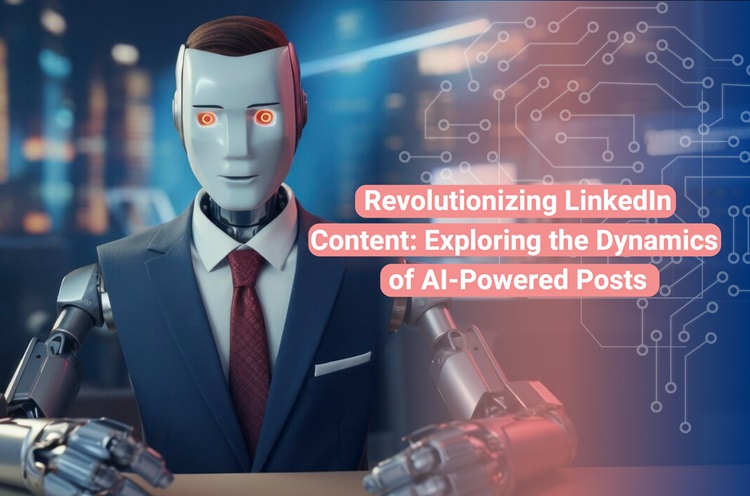The world of business is undergoing a seismic shift, with the integration of Artificial Intelligence (AI) revolutionizing the corporate landscape. LinkedIn, the Microsoft-owned social network for business professionals, is harnessing the power of artificial intelligence (AI) to streamline the recruitment process and enhance the user experience. This article will explore the dynamics of AI-powered posts on LinkedIn, how it is revolutionizing talent search and recruitment, and the ethical considerations and implications of its use.
LinkedIn’s AI-Powered Transformation: Revolutionizing Talent Search and Recruitment
LinkedIn’s AI-driven advancements promise to make the platform more user-friendly, efficient, and effective, ultimately benefiting recruiters, sales professionals, and marketers alike. Adapting to AI-Augmented Roles As AI takes on more tasks traditionally handled by users, LinkedIn acknowledges that job roles may need to adapt. Now, recruiters can pose questions naturally, and the AI system responds with clarifying questions.
Enhancing the User Experience
Traditional recruitment on LinkedIn required users to translate their queries into database-friendly language. The new AI features allow recruiters to ask questions in natural language, eliminating the need for complex data filters and keyword searches. With over 950 million members, LinkedIn’s latest move aims to make it easier for recruiters to find the perfect candidate. This bold move underscores LinkedIn’s commitment to keeping up with the evolving needs of its vast user base.
The majority of users will experience their jobs becoming augmented by AI, requiring some adjustment in their roles. Sales professionals can also benefit from similar tools for prospect searches. Jonathan D’haene on LinkedIn: Transforming Supply Chains: Exploring. Exciting News! Intuitive User Experience: By leveraging Choices BPF, you can provide your users with a seamless and intuitive experience, ensuring they can effortlessly interact with your business processes.
AI-Powered Adaptive Documentation
Contents Dynamics on LinkedIn: AI-Powered Adaptive Documentation. AI-Powered Adaptive Documentation: Revolutionizing the UX and DX!
In this article, Contents Dynamics helps you explore how Adaptive Documentation powered by AI can enhance user experiences, streamline troubleshooting, and bridge the gap between users and complex applications. The emergence of AI-powered Adaptive Documentation is set to revolutionize the way we interact with technology.
Applications of AI-Powered Posts
Empower users to achieve their goals effortlessly. Traditional help content often falls short of providing the necessary guidance and support to users. Seamless user experiences that eliminate confusion and frustration. The possibilities are endless: Real-time voice instructions synchronized with on-screen element highlighting. We are thrilled to share an insightful article on the game-changing power of #AdaptiveDocumentation and its impact on user experience in the world of technical communication. Personalized and context-aware assistance tailored to user needs.
Conclusion
Conclusion: Microsoft Dynamics 365 Supply Chain Management’s demand planning feature provides a comprehensive solution for demand forecasting. Understanding how these developments align with the broader context of Supply Chain Planning. To navigate the complexities of supply chain management, businesses can strategically leverage Dynamics 365 Supply Chain Management. Learn More Access the demand planning solution, Documentation, and Workshop: To access the demand planning Application and learn more about its features, follow the provided links Search for the Dynamics 365 demand planning Application and follow the installation process. This flexibility ensures that businesses can incorporate diverse datasets into their demand forecasting models. Demand Planning Insights Videos: Meet the Team: Onsite Workshop December 2023 The forthcoming demand planning Workshop, to be held at Microsoft’s facility in Lyngby, Denmark, is geared towards introducing the new demand planning application to both Customers and Partners.
